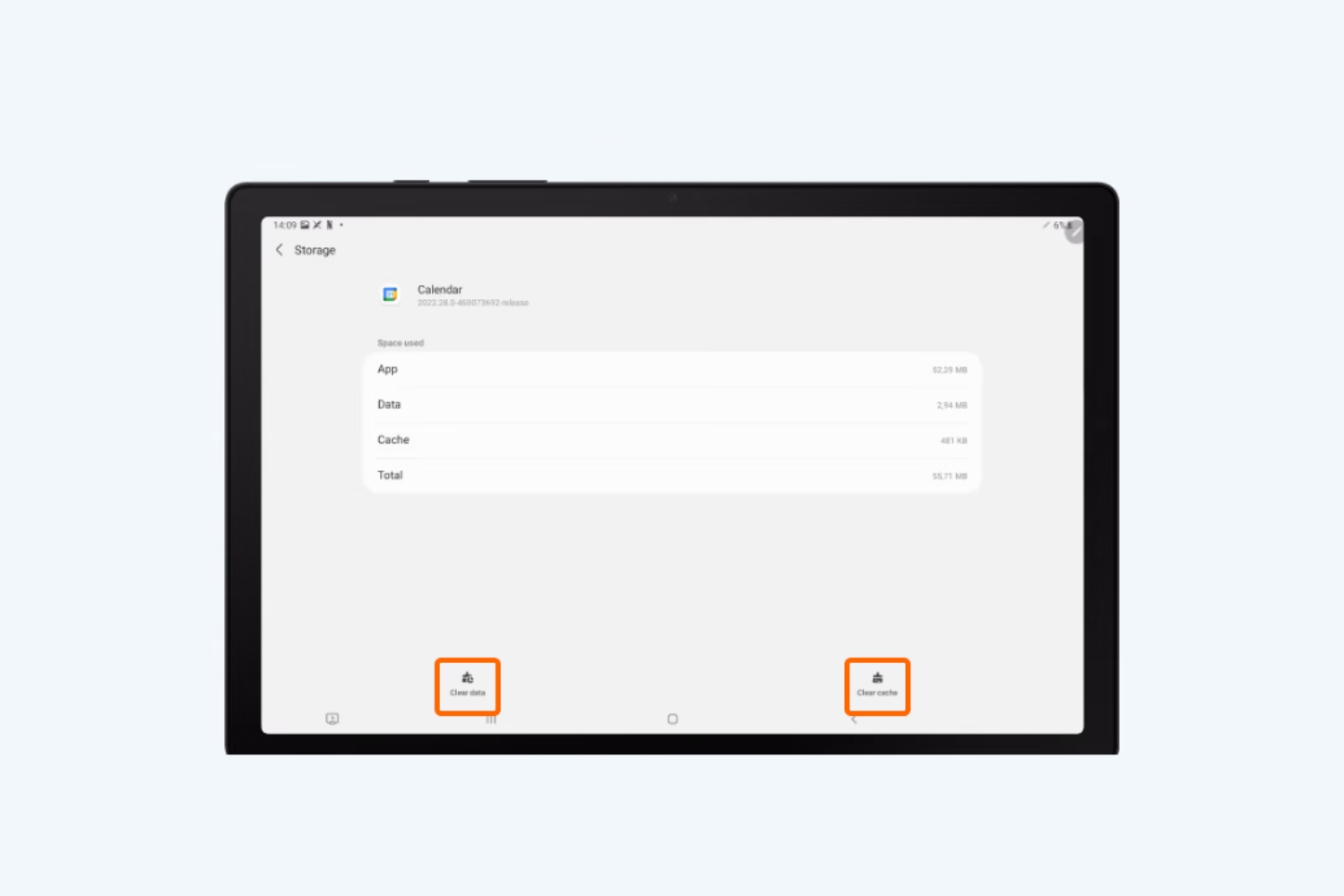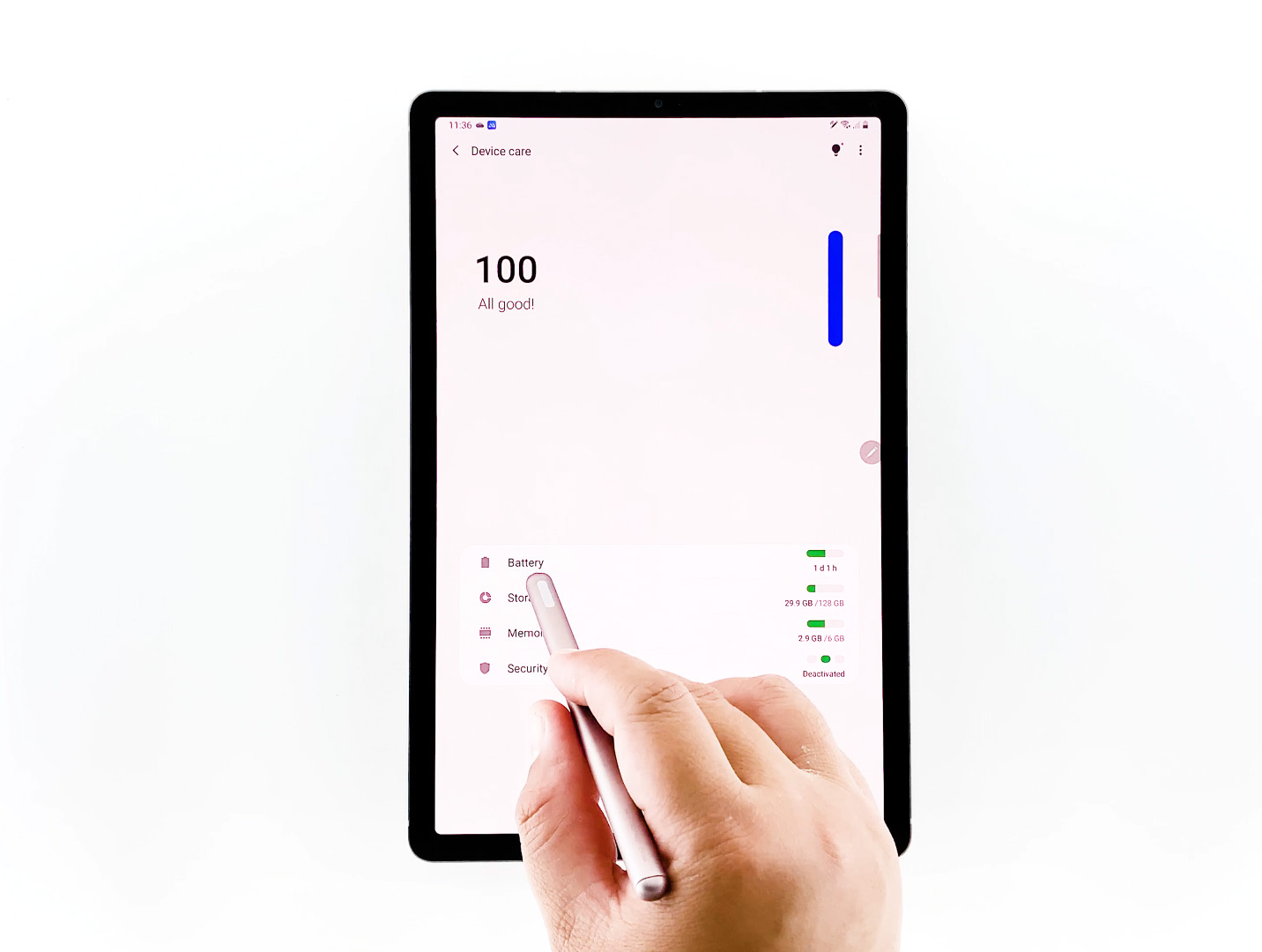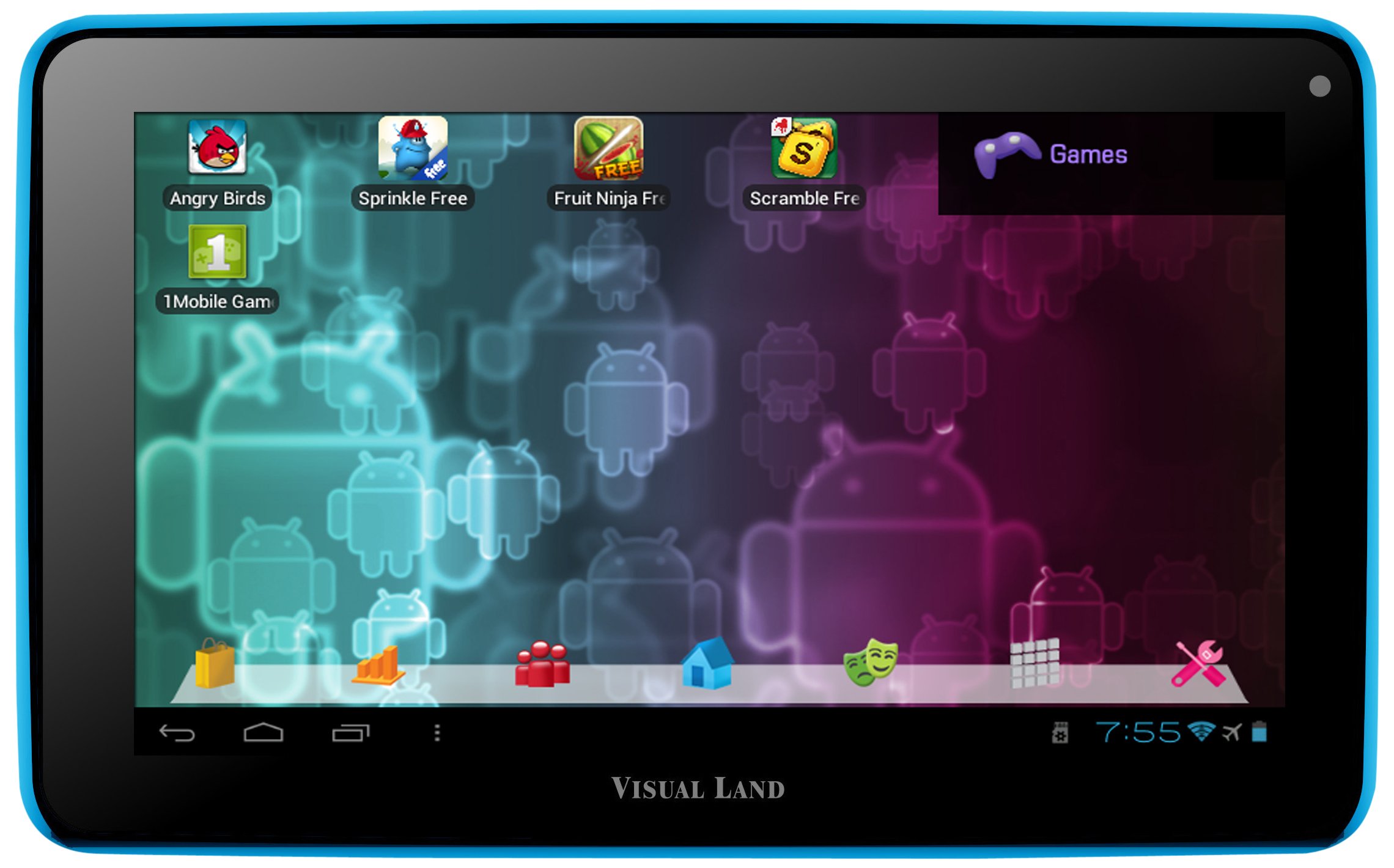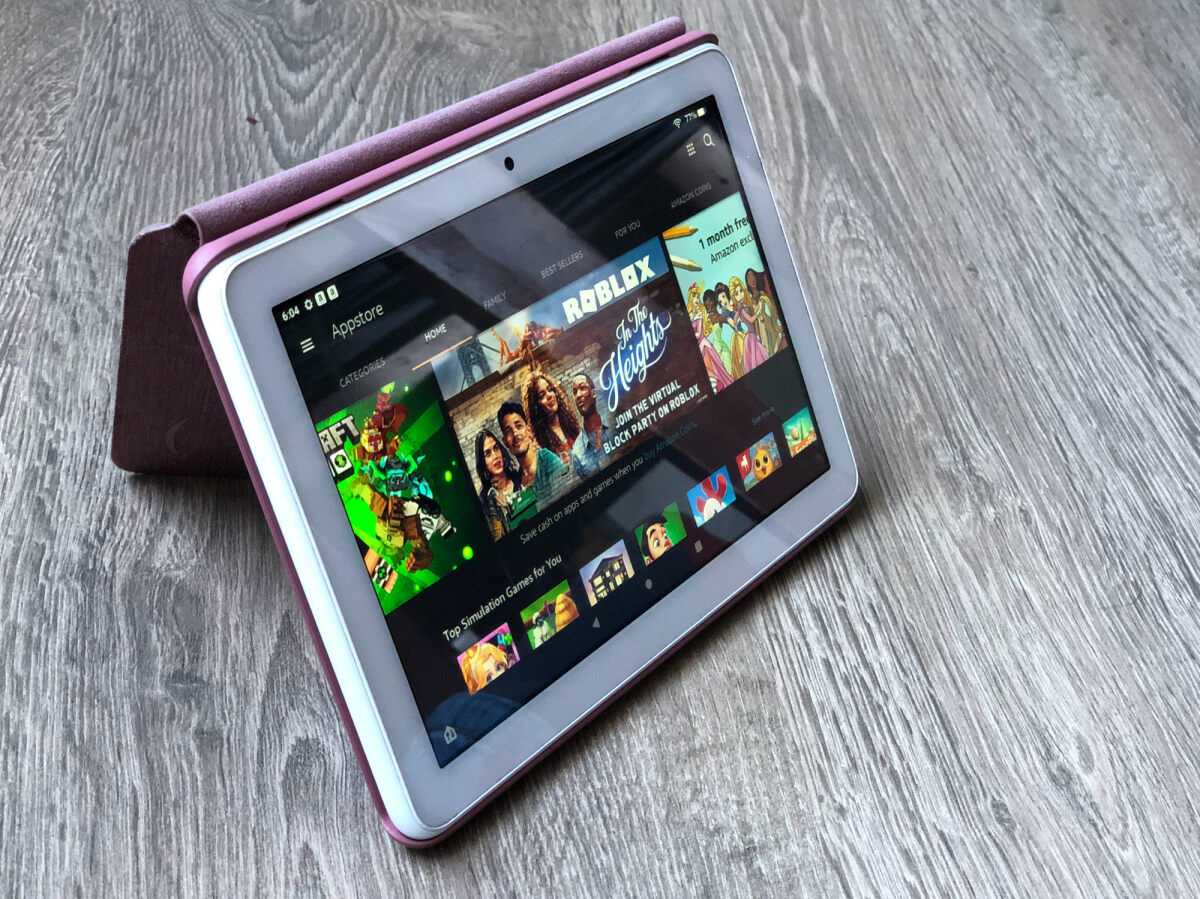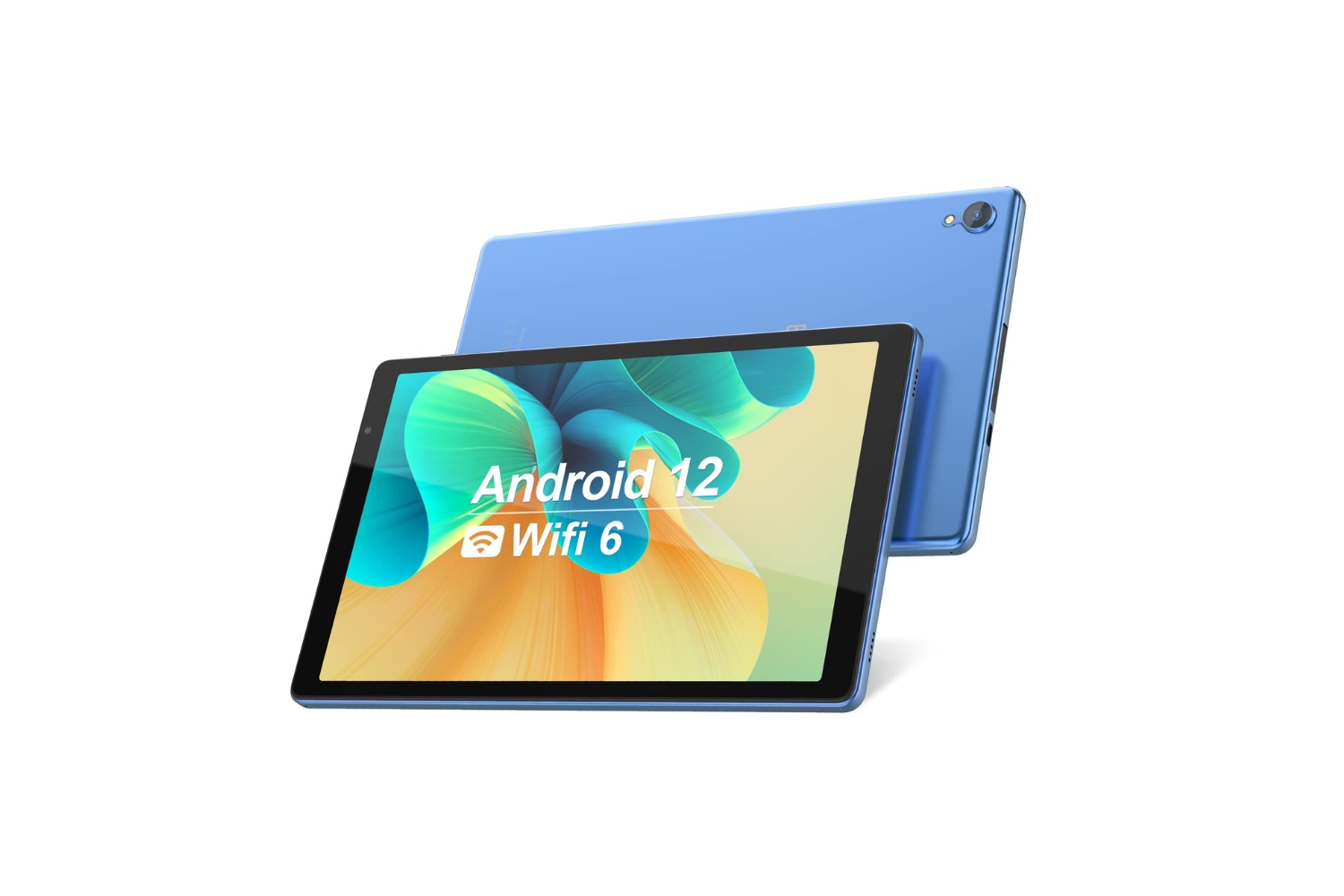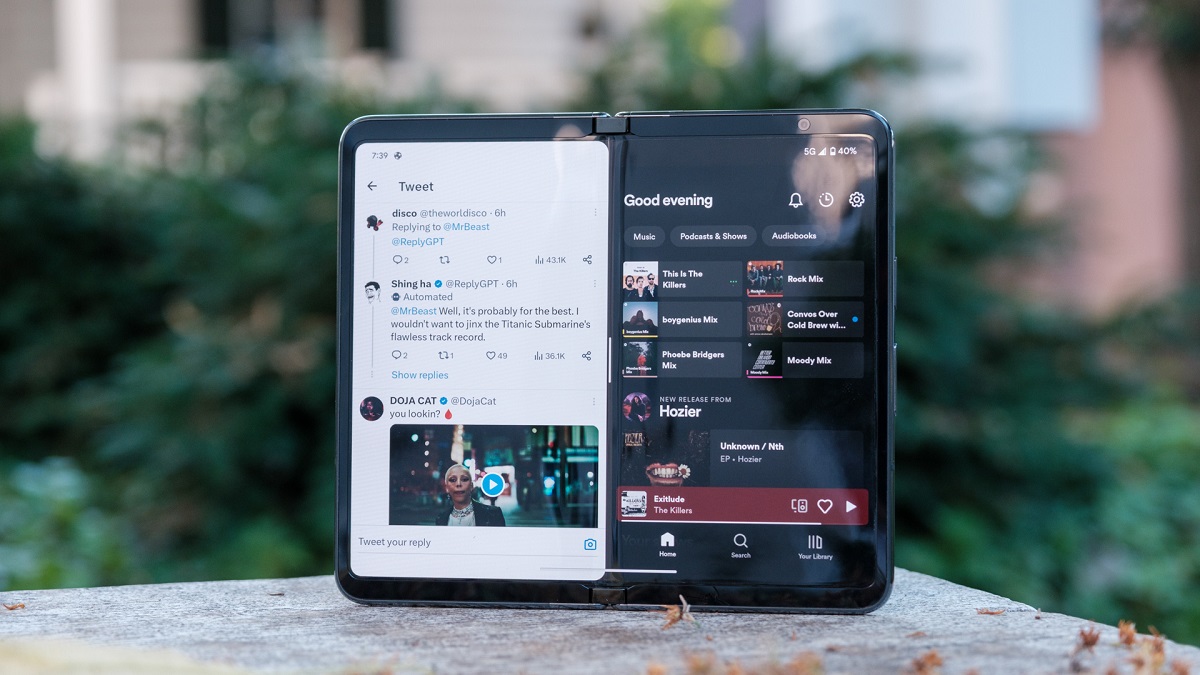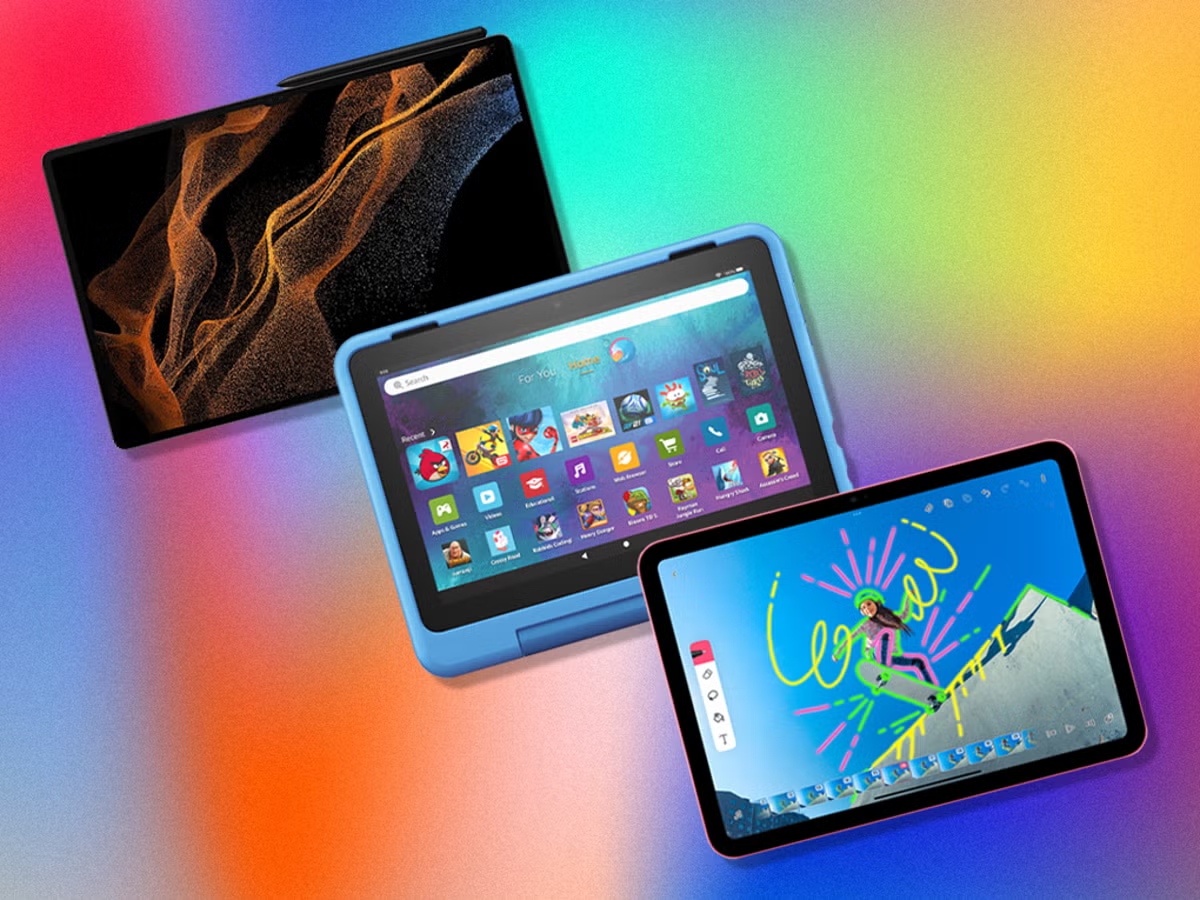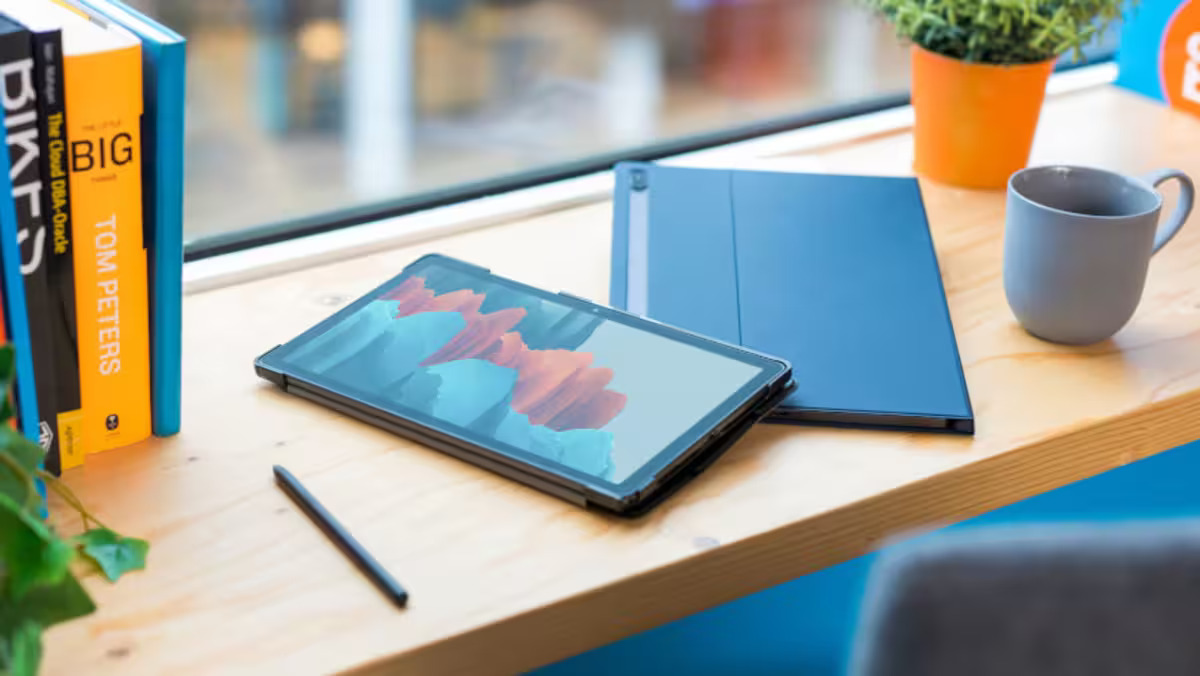Introduction
Welcome to our guide on how to make your tablet run faster! As tablets have become an essential part of our daily lives, it’s important to optimize their performance for a smoother user experience. You may have noticed that over time, your tablet starts to slow down, which can be frustrating when you’re trying to use it for work, entertainment, or even just browsing the web.
Fortunately, there are several strategies you can employ to improve the speed and responsiveness of your tablet. In this article, we’ll walk you through some practical tips and tricks to help you optimize your tablet’s performance and make it run faster.
Before we dive into the specific steps, it’s important to note that these techniques can vary depending on the model and operating system of your tablet. However, the general principles we discuss here can be applied to most tablets, regardless of the brand.
Now, let’s get started and learn how to speed up your tablet!
Clearing Cache and Data
One of the first steps in improving your tablet’s performance is to clear the cache and data of the apps you use frequently. When you open an app, it stores temporary files in the cache to help it load faster the next time you use it. Over time, these cached files can accumulate and slow down the overall performance of your tablet.
To clear the cache for individual apps, follow these steps:
- Open the Settings app on your tablet.
- Select “Apps” or “Applications” from the menu.
- Scroll through the list of installed apps and tap on the one you want to clear the cache for.
- Select the “Storage” option.
- Tap on the “Clear Cache” button.
This will remove the temporary files stored in the cache for that particular app. If you want to free up even more space and potentially improve performance, you can also clear the data for certain apps. However, keep in mind that clearing the data will erase any personal settings or preferences you have saved within the app, so proceed with caution.
In addition to clearing the cache and data of individual apps, you can also use the built-in “Storage” or “Device Maintenance” feature on your tablet to clear the cache for multiple apps simultaneously. This can save you time and effort in managing the cache for each individual app.
By regularly clearing the cache and data of your apps, you can help maintain optimal performance and ensure that your tablet runs smoothly.
Uninstall Unnecessary Apps
Is your tablet cluttered with apps that you no longer use? Uninstalling unnecessary apps can significantly improve your tablet’s performance. Not only will it free up storage space, but it will also reduce the number of background processes running on your device.
To uninstall apps on most tablets, follow these steps:
- Go to the Settings app on your tablet.
- Select “Apps” or “Applications”.
- Scroll through the list of installed apps and tap on the app you want to uninstall.
- Tap on the “Uninstall” button.
- Confirm the uninstallation when prompted.
It’s important to note that some pre-installed apps may not have the uninstall option. However, you can disable them or “force stop” them to prevent them from consuming system resources.
Removing unnecessary apps not only improves performance but also achieves better organization. By decluttering your tablet, you can navigate through your apps more efficiently and avoid the frustration of searching for specific apps in a crowded home screen.
Take some time to review the apps you have installed and consider whether you truly need them. Uninstalling apps that you rarely use or that serve no purpose can have a noticeable impact on your tablet’s speed and responsiveness.
Keep in mind that some apps may be necessary for the proper functioning of your tablet or are essential for your specific needs. Exercise caution when uninstalling apps and consider their importance before removing them.
By removing unnecessary apps, you can optimize your tablet’s resources and create a more streamlined and efficient device.
Disable Background Processes
Background processes are the apps and services that continue to run in the background even when you’re not actively using them. They consume system resources and can slow down your tablet’s performance. By disabling or managing these background processes, you can free up valuable resources and improve the overall speed of your tablet.
To disable or manage background processes on your tablet:
- Open the Settings app on your tablet.
- Select “Apps” or “Applications”.
- Tap on the “Running” or “Running Services” tab.
- Here, you’ll see a list of all the processes currently running in the background on your tablet.
- Identify any unnecessary or resource-intensive processes that you want to disable.
- Tap on the process and select the “Stop” or “Disable” option.
Keep in mind that some processes are essential for the proper functioning of your tablet or certain apps. Disabling critical processes may result in unexpected issues or hinder the functionality of certain features.
In addition to manually managing background processes, you can also use task manager apps or built-in system features to automatically optimize the use of system resources. These tools can help identify and stop background processes that are consuming excessive resources.
By disabling unnecessary background processes, you can ensure that your tablet’s resources are dedicated to the tasks and apps that you actively use. This can lead to a noticeable improvement in performance, especially when multitasking or running resource-intensive applications.
Remember to regularly check and manage background processes to keep your tablet running smoothly and efficiently.
Update Your Tablet’s Software
Keeping your tablet’s software up to date is crucial for optimal performance. Manufacturers often release software updates that contain bug fixes, security patches, and performance improvements. By regularly updating your tablet’s software, you can ensure that it runs smoothly and efficiently.
To check for and install software updates on your tablet, follow these steps:
- Open the Settings app on your tablet.
- Scroll down and select “About” or “About Device”.
- Tap on “Software Update” or “System update”.
- Your tablet will check for any available updates.
- If an update is available, follow the prompts to download and install it.
It’s important to note that software updates can vary depending on the manufacturer and model of your tablet. Some tablets may automatically install updates, while others may require manual intervention.
Updating your tablet’s software not only improves performance but also provides you with the latest features and security enhancements. Newer versions of operating systems often include optimizations that can boost your tablet’s speed and responsiveness.
In addition to updating the overall operating system, it’s also essential to keep your apps up to date. App updates frequently include performance improvements and bug fixes. You can enable automatic app updates in the Google Play Store or App Store settings so that you don’t have to manually update each app.
By regularly updating both the software on your tablet and the apps you use, you can ensure that you’re running the most efficient and secure version, enhancing overall performance and user experience.
Use a Lightweight Launcher
A launcher is the interface that allows you to navigate through your tablet’s home screen, app drawer, and other features. Some launchers consume more system resources than others, which can impact the speed and performance of your tablet. By using a lightweight launcher, you can optimize your tablet’s resources and improve its overall speed and responsiveness.
There are several lightweight launchers available in the Google Play Store or the App Store for Android and iOS tablets, respectively. These launchers are designed to be minimalistic and consume fewer system resources while offering a smooth and efficient user experience.
To use a lightweight launcher on your tablet, follow these steps:
- Open the Google Play Store or App Store on your tablet.
- Search for lightweight launchers in the search bar.
- Look for launchers that have positive reviews and high ratings.
- Select the launcher you want to try and tap on the “Install” or “Get” button.
- Once the installation is complete, open the launcher and follow the setup instructions.
- Set the lightweight launcher as the default launcher for your tablet.
After setting up the lightweight launcher, you may notice a difference in the speed and fluidity of your tablet’s interface. These launchers often prioritize simplicity and efficiency, resulting in faster app launches, smoother transitions, and reduced memory consumption.
Remember that changing your launcher may modify the appearance and functionality of your tablet’s home screen. Some lightweight launchers offer customization options, allowing you to personalize the layout and theme to your liking.
By using a lightweight launcher, you can optimize your tablet’s performance, enhance its responsiveness, and create a more efficient user experience.
Adjust Animation and Transition Settings
Animations and transitions are visual effects that add a touch of elegance and smoothness to your tablet’s user interface. However, these effects require processing power and can contribute to a slower performance, especially on older or less powerful tablets. By adjusting the animation and transition settings, you can reduce the visual effects and improve the overall speed of your tablet.
To adjust the animation and transition settings on most Android tablets, follow these steps:
- Open the Settings app on your tablet.
- Scroll down and select “About” or “About Tablet”.
- Locate “Build Number” and tap on it multiple times until you see a message indicating that you are now a developer.
- Now, go back to the main Settings menu and select “Developer Options” (this option is now unlocked).
- Scroll down and look for the “Window Animation Scale,” “Transition Animation Scale,” and “Animator Duration Scale” options.
- Tap on each option and select either “Animation off” or “Animation scale 0.5x” (or lower) to reduce the animation speed.
By reducing the animation and transition settings, you can minimize the time it takes for your tablet to respond to your taps and swipes. This gives the impression of a faster and more responsive device.
Similarly, iOS devices like iPads also allow you to adjust the animation settings. To do this:
- Go to the Settings app on your tablet.
- Select “Accessibility”.
- Tap on “Motion” or “Motion & Orientation” depending on your iOS version.
- Toggle on “Reduce Motion” to decrease the animation effects.
By reducing the animation and transition effects, you can optimize the performance of your tablet, especially if you have an older or slower device.
Keep in mind that reducing the animation and transition effects may make your tablet’s interface feel less visually appealing. However, it can significantly improve the speed and responsiveness of your tablet, especially during multitasking or heavy app usage.
Experiment with different settings until you find the right balance between aesthetics and performance that suits your preferences.
Limit Widgets and Live Wallpapers
Widgets and live wallpapers are popular features that allow you to customize your tablet’s home screen and add interactive or dynamic elements. While these can enhance the visual appeal of your device, they can also impact its performance. Limiting the number of widgets and avoiding live wallpapers can help improve the speed and responsiveness of your tablet.
Widgets are small applications that provide quick access to information or functions from the home screen. However, having too many widgets running simultaneously can consume system resources and slow down your tablet. Consider removing unnecessary widgets or keeping only the ones that you use frequently.
To remove widgets from your tablet’s home screen, follow these steps:
- Long-press on the widget you want to remove.
- Drag the widget to the “Remove” or “Trash” icon that appears on the screen.
Alternatively, you can go to the widget settings by long-pressing on an empty area of your home screen and selecting “Widgets”. From there, you can choose to add or remove widgets as desired.
Another culprit for performance issues is live wallpapers. Live wallpapers are animated backgrounds that can change and interact with your touch or device movement. While visually appealing, live wallpapers utilize system resources, including CPU and battery power, which can slow down your tablet.
To change your wallpaper to a static image or pre-installed wallpapers on your tablet, follow these steps:
- Long-press on an empty area of your home screen.
- Select “Wallpapers”, “Wallpaper”, or a similar option.
- Choose a static wallpaper or browse through the pre-installed wallpapers.
- Select the desired wallpaper and set it as your new background.
By limiting the number of widgets and avoiding live wallpapers, you can reduce the strain on your tablet’s resources, allowing it to run faster and smoother. Consider keeping only essential widgets and opting for static wallpapers that don’t drain system resources.
Remember, customizing your tablet’s appearance is a personal choice, and it’s all about finding a balance between aesthetics and performance. Experiment with different configurations to find the ideal setup that suits your needs and preferences.
Remove Unused Files and Apps
Over time, our tablets can become cluttered with unused files and apps, taking up valuable storage space and potentially affecting performance. To optimize your tablet’s performance, it’s essential to regularly remove unnecessary files and uninstall unused apps.
Unused files such as photos, videos, documents, and downloads can accumulate on your tablet, occupying storage space that could be better utilized. Review your files and delete any that are no longer needed. You can do this by using the built-in file manager app or a third-party file manager available on your tablet’s app store.
To remove files on most tablets, follow these steps:
- Open the file manager app on your tablet.
- Navigate to the folder where the file is located.
- Select the files you want to remove.
- Tap on the “Delete” or “Remove” option.
- Confirm the deletion when prompted.
In addition to removing unused files, it’s also important to uninstall apps that you no longer use. Unused apps take up storage space and can run background processes that consume system resources, potentially impacting the performance of your tablet.
To uninstall unwanted apps on most tablets, follow these steps:
- Open the Settings app on your tablet.
- Select “Apps” or “Applications”.
- Scroll through the list of installed apps and tap on the app you want to uninstall.
- Tap on the “Uninstall” button.
- Confirm the uninstallation when prompted.
Review your apps and uninstall any that you no longer use or need. This will not only free up storage space but also streamline your app library, making it easier to find the apps you use frequently.
By regularly removing unused files and uninstalling unnecessary apps, you can optimize your tablet’s storage space and improve its overall performance.
Utilize SD Card Storage
If your tablet supports expandable storage through an SD card, utilizing this additional storage space can help optimize your tablet’s performance. By offloading files and apps to the SD card, you can free up internal storage and improve the overall speed and responsiveness of your tablet.
To begin using your SD card for storing files and apps, follow these steps:
- Insert the SD card into the appropriate slot on your tablet (refer to your tablet’s user manual for specifics).
- Open the Settings app on your tablet.
- Select “Storage” or “Device Storage”.
- Tap on “SD card” or a similar option.
- Select “Format as internal” or “Use as internal storage” (Note: This option may vary depending on your tablet’s operating system).
- Follow the prompts to format your SD card as internal storage.
After formatting the SD card as internal storage, you can choose to move apps and files to the SD card by following these steps:
- Open the Settings app on your tablet.
- Select “Apps” or “Applications”.
- Scroll through the list of installed apps and tap on the app you want to move to the SD card.
- Select the “Storage” option.
- Tap on the “Change” or “Move” option (the wording may vary).
- Choose the SD card as the destination and confirm the move.
Keep in mind that not all apps can be moved to the SD card, as some may require internal storage for proper functioning. However, moving compatible apps and storing files such as photos, videos, and documents on the SD card can make a significant difference in freeing up internal storage.
By utilizing the SD card storage, you can optimize your tablet’s internal storage and create a more efficient device. This can result in improved performance, faster app launches, and smoother multitasking.
Ensure that you have a reliable and high-quality SD card to store your data. Lower-quality SD cards may compromise data integrity and result in slower performance.
Clean Your Tablet’s Screen
Keeping your tablet’s screen clean is not only important for its appearance but also for its functionality. Over time, fingerprints, dust, and smudges can accumulate on the screen, affecting its clarity and responsiveness. Regularly cleaning your tablet’s screen can help improve the user experience and ensure optimal performance.
To clean your tablet’s screen effectively, follow these steps:
- Power off your tablet and disconnect any charging cables.
- Use a soft, lint-free cloth, microfiber cloth, or screen cleaning wipe designed specifically for electronic devices.
- Gently wipe the screen in a circular motion to remove any fingerprints, smudges, or dust particles. Avoid applying too much pressure, as this could potentially damage the screen.
- If there are stubborn stains or grease marks, slightly dampen the cloth with water or a screen cleaning solution. However, be cautious not to apply excessive moisture.
- Do not use abrasive materials, harsh chemicals, or household cleaning products, as these can damage the screen’s coating or leave scratches.
- Once you are satisfied with the cleaning, allow the screen to dry before turning on your tablet.
In addition to cleaning the screen, it’s also essential to clean the ports and buttons on your tablet. Dust and debris can accumulate in these areas, potentially hindering connectivity or causing functionality issues. Use a soft, dry cloth or a soft brush to gently clean the ports and buttons of your tablet.
By regularly cleaning your tablet’s screen, you can enjoy a clearer display and a more responsive touch experience. This is especially important for tasks that require precise touch input, such as typing, drawing, or gaming.
Consider establishing a routine for cleaning your tablet’s screen to maintain optimal performance and prolong its lifespan. It is recommended to clean the screen at least once a week, or more frequently if necessary, depending on your usage patterns and environmental conditions.
Remember, a clean and smudge-free screen not only enhances the visual quality of your tablet but also contributes to a more enjoyable and efficient user experience.
Restart Your Tablet Regularly
Restarting your tablet regularly is a simple yet effective way to maintain its optimal performance. Over time, running applications, background processes, and system resources can accumulate, causing sluggishness and performance issues. Restarting your tablet clears these processes and provides a fresh start, improving speed, responsiveness, and overall functionality.
When you restart your tablet, you essentially clear the device’s temporary memory (RAM) and close all running applications, ensuring that your tablet starts with a clean slate. It can help resolve minor software glitches, memory leaks, and other performance-related issues.
To restart your tablet, follow these simple steps:
- Press and hold the power button on your tablet.
- Select the “Restart” or “Reboot” option from the power menu that appears.
- Wait for your tablet to power off completely and then turn it back on.
Additionally, you can perform a complete shutdown by following the same steps and selecting the “Power off” option instead of “Restart.” This can be beneficial when you want to give your tablet a longer break for a more thorough reset.
Restarting your tablet not only refreshes its performance but also allows important system updates to take effect. Sometimes, updates require a restart to fully complete installation and optimize the tablet’s performance.
It’s a good practice to restart your tablet at least once a week to maintain its performance. However, if you notice significant sluggishness or are experiencing specific issues, restarting your tablet can be a quick troubleshooting step.
Furthermore, restarting your tablet can help conserve battery life. Certain background processes and apps may consume more power over time, and a restart helps to close them down, resulting in improved battery efficiency.
By restarting your tablet regularly, you can keep it running smoothly and ensure that you’re getting the best performance out of your device.
Conclusion
By implementing the strategies outlined in this guide, you can effectively make your tablet run faster and optimize its performance. Clearing cache and data, uninstalling unnecessary apps, disabling background processes, updating your tablet’s software, using a lightweight launcher, adjusting animation and transition settings, limiting widgets and live wallpapers, utilizing SD card storage, cleaning your tablet’s screen, and restarting your tablet regularly are all steps that can contribute to a smoother and more efficient tablet experience.
Remember, each tablet may have slightly different menus and settings, so it’s important to refer to your specific device’s user manual or explore the Settings menu for the most accurate instructions.
It’s also worth noting that maintaining a clutter-free tablet with a focus on efficient storage management and regular maintenance can greatly impact performance. By taking the time to regularly review your tablet’s apps, files, and settings, you can ensure that you’re optimizing its resources and keeping it running at its best.
Don’t forget to also prioritize your tablet’s security by keeping its software up to date, using reputable sources for app installations, and being cautious of suspicious links or downloads. A well-maintained and updated tablet not only performs better but also has improved security against potential threats.
By following these tips and tricks, you can enhance your tablet’s speed, responsiveness, and overall user experience. Enjoy a faster and more efficient tablet that allows you to work, play, and browse with seamless performance.







